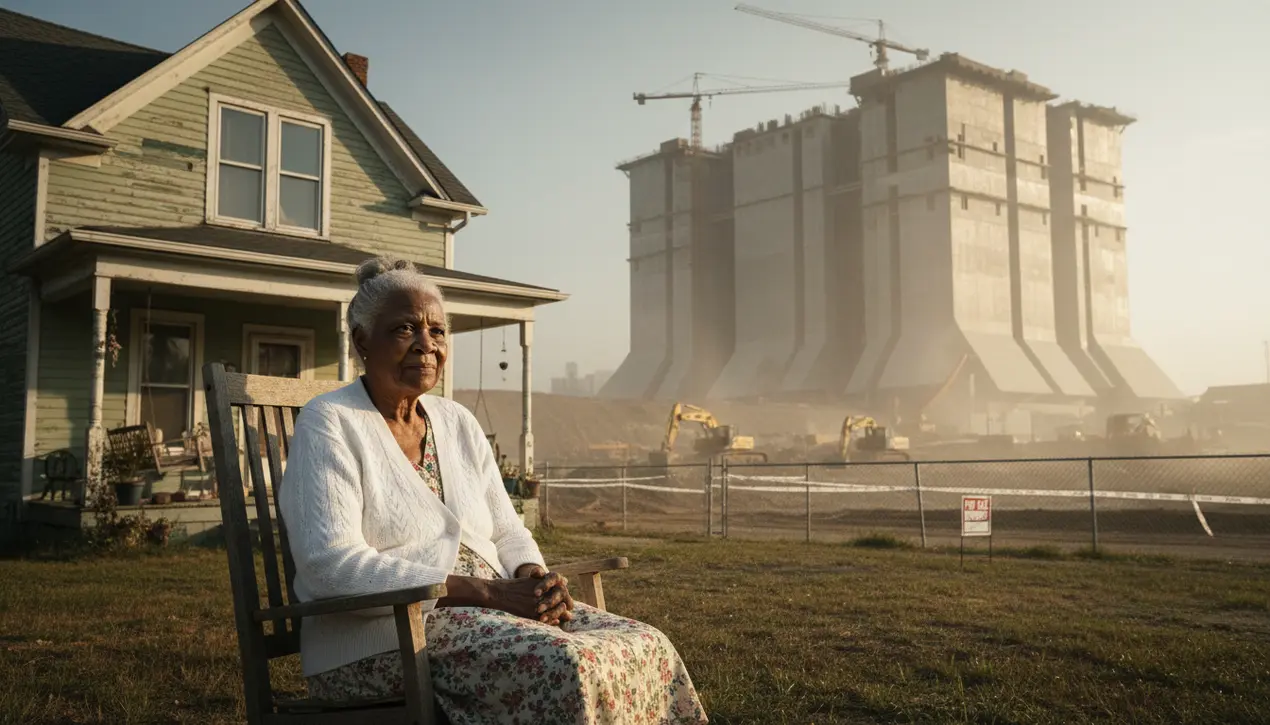
Otherreal estateReal Estate Investments
A $100 Billion Chip Project Forced a 91-Year-Old Woman From Her Home
LA
Laura Bennett
22 hours ago7 min read2 comments
Azalia King’s small, well-kept home stood as a quiet testament to a life fully lived, a place where the walls held nearly a century of memories—birthday parties, holiday gatherings, the simple, daily rhythm of an ordinary existence that becomes extraordinary when viewed through the lens of time. At ninety-one, she was the last resident holding out against the colossal force of progress, a solitary figure in the path of Onondaga County’s threat to wield eminent domain for a $100 billion Micron 'megafab' chip plant.This wasn't merely a property dispute; it was a profound collision between the hyper-local, intimate geography of a single human life and the global, impersonal demands of technological sovereignty and economic ambition. The narrative of an elderly woman being compelled to leave her home to make way for a factory that represents the future feels almost archetypal, a modern-day echo of the land clearances that have dotted history, yet it is imbued with a distinctly 21st-century urgency.Nations, particularly the United States, are in a frantic race to secure their semiconductor supply chains, viewing them as the new oil, the essential lifeblood of everything from smartphones to military hardware. The CHIPS and Science Act, with its billions in incentives, is the political engine behind this push, creating a landscape where local governments, hungry for jobs and investment, often find themselves making Faustian bargains.The promise of thousands of jobs and a transformed regional economy is a powerful, seductive force, one that can easily overshadow the quiet plea of a single citizen. Yet, in interviews with neighbors who had already relocated, a complex picture emerges—not just of resignation, but of a fractured community spirit, of people who understood the economic necessity but mourned the loss of a shared history.Azalia’s resistance, therefore, becomes more than stubbornness; it is a form of testimony. It forces us to ask uncomfortable questions about the true cost of progress and the metrics we use to define the public good.Is it merely the aggregate economic output, or does it include the preservation of the social fabric and the respect for those who have built it? Legal experts point out that while eminent domain is a powerful tool, its application in cases like this often hinges on interpretations of 'public use' that are increasingly being challenged in courtrooms and in the court of public opinion. The psychological impact of such a displacement on an individual of Azalia’s age cannot be overstated; studies on geriatric care consistently highlight the critical importance of familiar environment and routine to cognitive and emotional well-being.Uprooting her is not just a change of address; it is a fundamental disruption of her world. Meanwhile, Micron and the county officials project a vision of a gleaming, high-tech future, a hub of innovation that will put the region on the map.They speak in the language of global competition, of national security, of securing a place in the economy of tomorrow. But this grand narrative, for all its data and projections, feels hollow when placed beside the tangible reality of Azalia’s home.Her story is a poignant reminder that behind every major industrial policy, every geopolitical maneuver, there are human beings whose lives are irrevocably altered. The resolution of this standoff will reveal much about our collective priorities—whether we can build the future without carelessly discarding the past, and whether our definition of a strong community includes space for its most vulnerable, yet most resilient, members.
#featured
#eminent domain
#Micron
#megafab
#Onondaga County
#property rights
#semiconductor manufacturing
#construction
Stay Informed. Act Smarter.
Get weekly highlights, major headlines, and expert insights — then put your knowledge to work in our live prediction markets.
Related News
Comments
Loading comments...
© 2025 Outpoll Service LTD. All rights reserved.